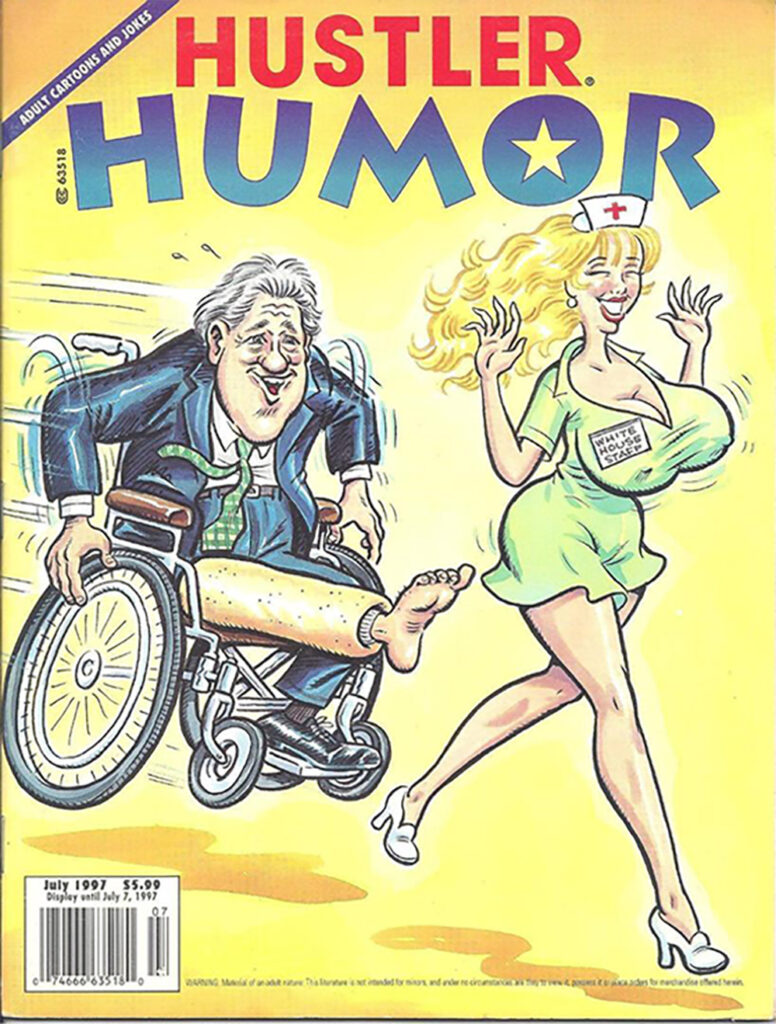THE HUSTLER FILES:
Cartoons and Controversy: Unveiling the Legacy of Hustler Magazine’s Provocative Artists
Cartoons and Controversy: Unveiling the Legacy of Hustler Magazine’s Provocative Artists
Hustler Magazine’s infamous cartoons played a significant role in shaping the magazine’s identity and eliciting strong reactions during the 1970s. Among its many controversial features, the magazine’s cartoons, created by a cadre of talented and often provocative artists, played a significant role in shaping its identity.
One of the most well-known cartoonists associated with Hustler was Robert Crumb, a counter-culture icon renowned for his underground comix. Crumb’s contributions to the magazine were marked by his distinctive style and a penchant for satirizing societal conventions. His characters, often portraying exaggerated and explicit scenes, resonated with the counterculture movement of the 1970s, challenging mainstream perceptions of sexuality and morality.
 Another notable contributor was Dwaine Tinsley, who joined Hustler in the late 1970s. Tinsley’s work was characterized by its dark humor and explicit depictions, exploring themes of taboo and transgression. His cartoons frequently delved into the controversial, addressing subjects like race, religion, and sexuality with a no-holds-barred approach. Tinsley’s controversial cartoons led to legal troubles for Flynt and himself, adding to the magazine’s reputation for pushing the boundaries of the First Amendment.
Another notable contributor was Dwaine Tinsley, who joined Hustler in the late 1970s. Tinsley’s work was characterized by its dark humor and explicit depictions, exploring themes of taboo and transgression. His cartoons frequently delved into the controversial, addressing subjects like race, religion, and sexuality with a no-holds-barred approach. Tinsley’s controversial cartoons led to legal troubles for Flynt and himself, adding to the magazine’s reputation for pushing the boundaries of the First Amendment.
Hustler’s cartoons covered a wide range of subjects, from political satire to sexually explicit humor. The magazine’s irreverent and often controversial take on current events and cultural norms made it a lightning rod for criticism, but also garnered a dedicated readership.
During its heyday in the late 1970s and 1980s, Hustler’s cartoons were viewed as both transgressive and liberating. The magazine positioned itself as a champion of free speech, using its cartoons as a means of challenging societal taboos and promoting a more open-minded approach to sexuality. However, this approach was not without its detractors, as many criticized the magazine for crossing the line into obscenity.
In the modern context, the cultural shift has redefined the way society views explicit content and satire. The internet and changing social norms have led to a more permissive environment for discussing once-taboo subjects. As a result, the shock value of Hustler’s cartoons has diminished, and what was once considered provocative is now seen through a more nuanced lens.
In retrospect, the cartoons featured in Hustler Magazine’s first decades were a reflection of their time, capturing the spirit of an era marked by social upheaval and a reevaluation of cultural norms. While the magazine’s legacy is undoubtedly controversial, its impact on the freedom of expression and the evolution of societal attitudes towards sexuality cannot be denied. Today, as society continues to evolve, Hustler’s cartoons offer insights into the ever-changing landscape of free speech, censorship, and cultural taboos.


